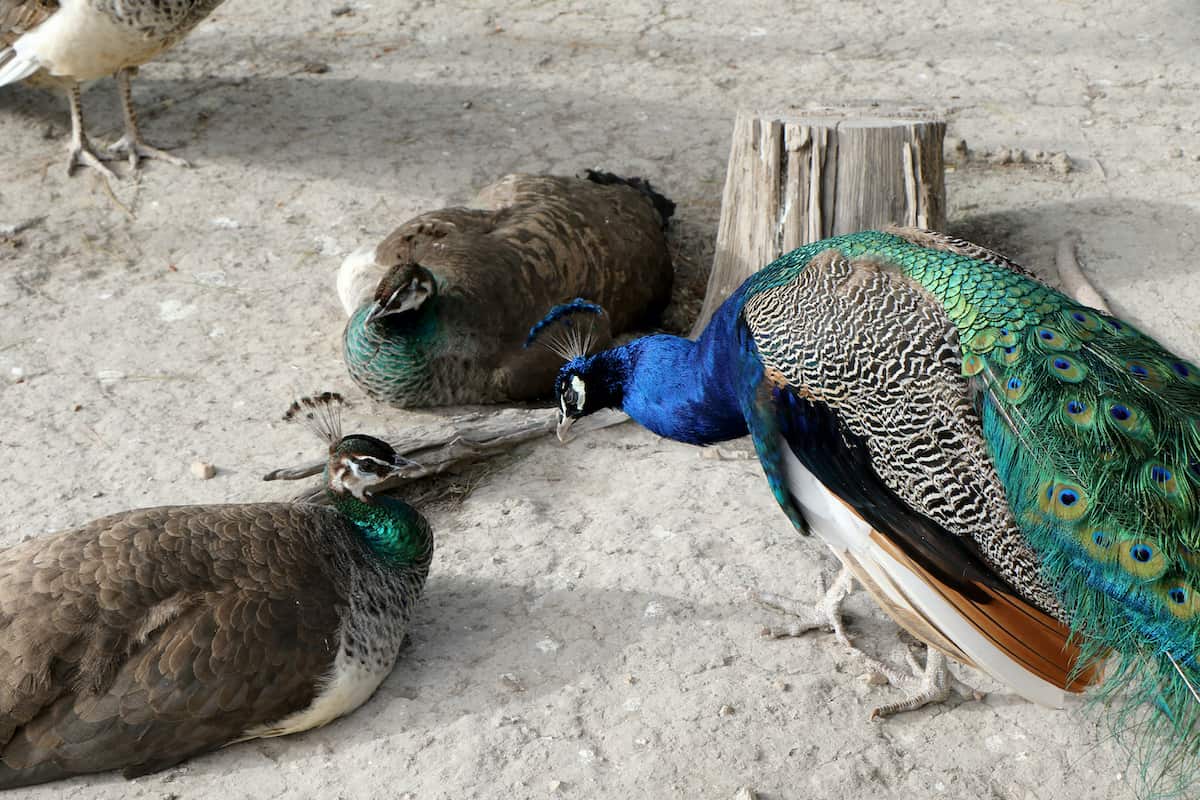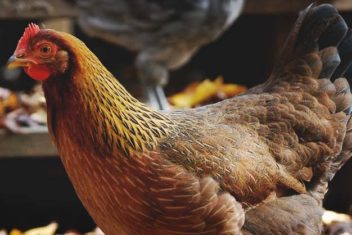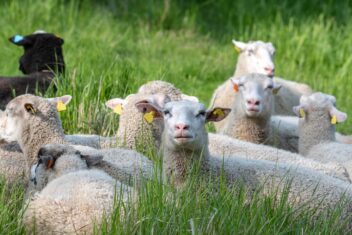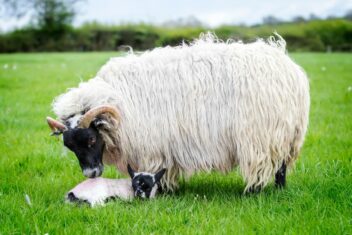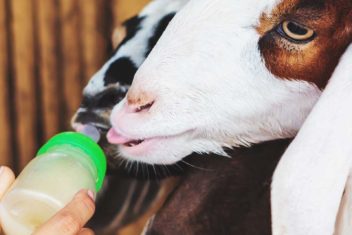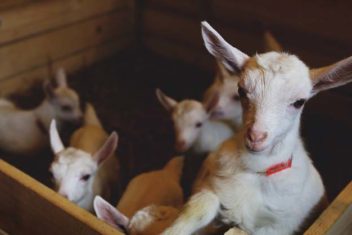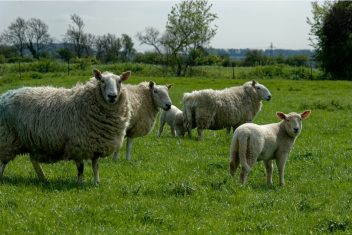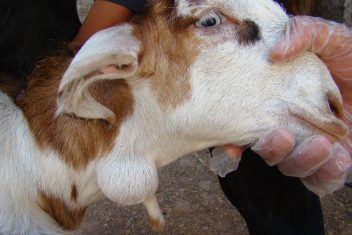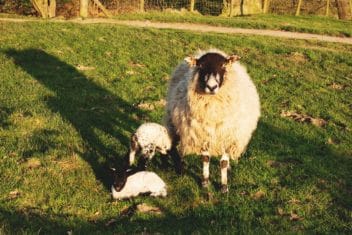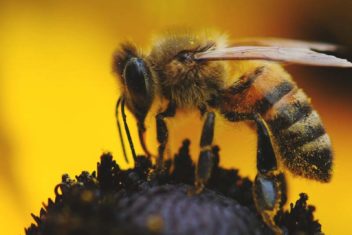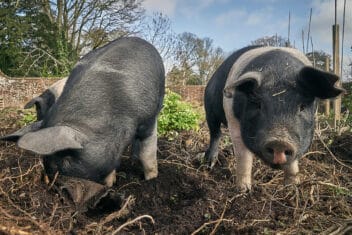It’s a peafowl! No, it’s a peacock!
Wait…it’s actually the same thing.
If you’re thinking about raising peacocks, you may have seen them described as “peafowl” from time to time. That’s because peacocks are technically just the males of these species, most easily recognizable by their gorgeous ornamental tail feathers.
Peafowls are incredibly easy to raise, yet they are far from the most popular homestead species of birds. Here’s what you need to know about raising peafowl on your farm.
What are Peafowl?

Peafowls are peacocks – or vice versa, really. These birds are large, social animals that are perhaps best known for their big, bright blue and green colors. Their feathers are some of the most detailed in the world.
Hailing from the Phasianidae family, there are three separate species of peafowl, but they are common species of peafowl kept on farms:
- The Javanese, also called green peafowl.
- The Congo peafowl.
- The Indian Blue peafowl.
Peacocks were first kept as pets by Chinese and Europeans who were attracted to their plumage. Since then, however, more farmers have realized the value of raising peacocks for meat and eggs, too.
There are several terms that can be used to refer to peacocks, including peahens (females), babies (peachicks), and of course, peacocks (males).
It’s easy to determine the difference between genders. Males tend to be more colorful and are larger, while females are smaller and definitely not as colorful.
Reasons to Raise Peafowl
1. Lifespan
If you’re considering raising any kind of poultry as a pet, then peafowls are the way to go. They are not only beautiful, but they also live incredibly long lives – up to 50 years for some individuals! That’s not necessarily the norm, though – most will only live about 12-15 years or so.
2. Beauty
Raise a few peafowls, and you’re practically guaranteed to have the most beautiful lawn on the block! Your neighbors will definitely be asking questions about these gorgeous new additions to the neighborhood.
Peafowls are often raised for no other reason than their sheer ornamental value. These creatures are absolutely beautiful to behold and their feathers are often sold and used for things like fly-tying and other crafty pursuits.
3. Eggs
Peahens won’t become reliable layers until they are about 2 years old. They lay clutches of about a dozen eggs and sit on them for a month when broody.
Peahen eggs are about 3 times as large as chicken eggs. They taste more or less the same as chicken eggs but with a bit of a gamier flavor and texture.
4. Meat
Some people might be shocked at the idea of eating a bird as exotic as a peacock. It is a very rare animal to raise for meat, that’s for sure. While there are some restrictions on importing peacock meat, it is not illegal to raise these birds for meat in the US.
Though uncommon, some people do raise peacocks for meat. It has a taste and texture similar to chicken but more flavorful and aromatic.
Challenges Associated with Raising Peafowl
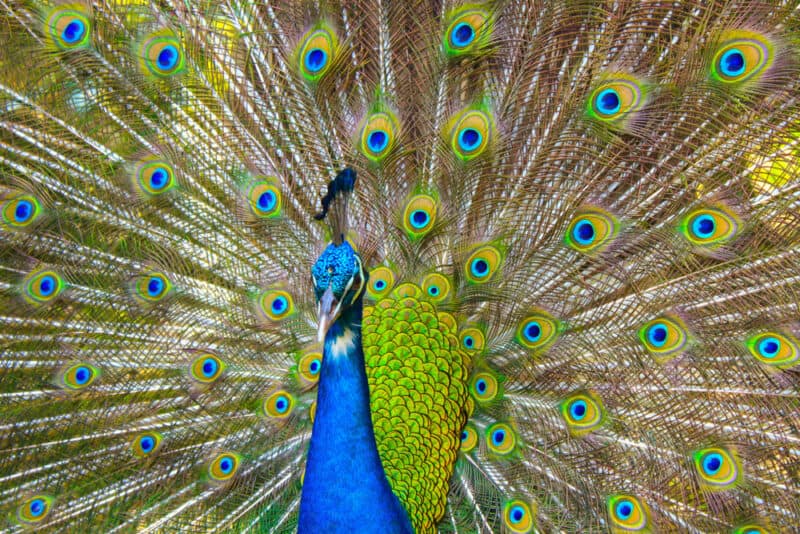
1. Noise
Peafowls are very noisy. In fact, if you’ve ever raised guinea fowl, you can expect your peafowl to be even louder. They make a loud shrilling call that can be heard up to 5 miles away, with some individuals also making honking sounds.
They don’t discriminate between times of the day, either – peafowl will make noises all day long. Fortunately, peahens aren’t as loud as peacocks, but they’re still chatty enough in their own regard.
2. Poor Weather Adaptability
Peafowls can be raised just about anywhere, but it’s important to note that they do much better in the heat than they do the cold. If you raise peafowl in a cold climate, you need to make sure they have adequate shelter. After all, they’re native to Asia jungles – they like the heat.
They are also susceptible to wind and wet weather. If you’re going to raise peafowl, make sure you do so in a closed-in area that’s out of the wind and rain.
3. Predators
As with all other kinds of poultry, predators are a major concern when raising peafowl. Although they can fly, it is still easy for predators to get at them if they are allowed to free-range. You’ll need to watch out for all manner of predators, including bears, raccoons, coyotes, and other animals.
If you raise peafowl, it’s essential that you do not clip their wings. Flight is the peafowl’s only defense against predators!
Raising Peafowl
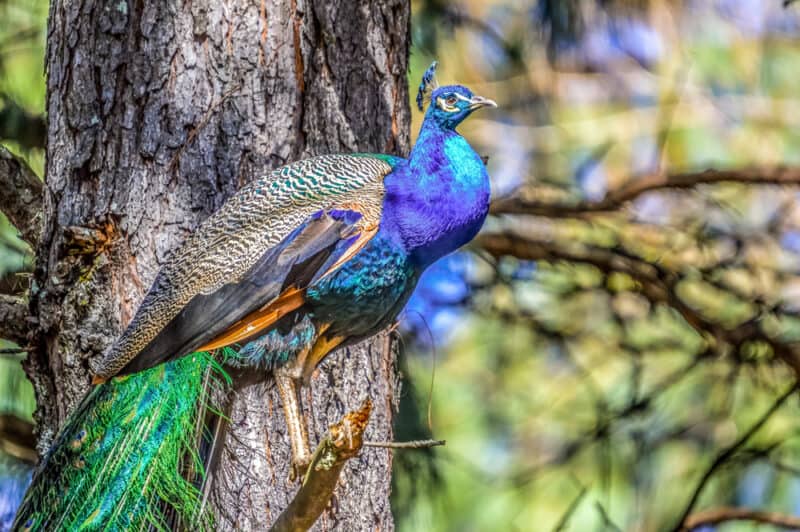
1. Feed
Peafowls are not picky eaters. Like chickens, they are omnivores, so they will eat just about anything. You should feed chicks a medicated starter during the first 6 months, ideally mixed with a gamebird starter. A starter feed should contain about 20-24% protein. They may also need grit if they eat foods besides the starter.
Make sure your peafowl have access to clean, cool water at all times. They are easily dehydrated.
You can feel free to feed your peafowl treats, just as you would chickens. They will eat all kinds of foods, including:
Some people feed their peafowl chicken feed. This is not necessarily recommended because it does not contain the right amount of protein.
2. Housing
Housing your peafowl will depend primarily on their age and how you intend to use them. If you want to breed peafowl, you’ll need to give your birds more space as the males produce a long tail train and need to be exercised. This pen should be 7-feet tall and 10-feet wide.
All peafowl enclosures should have some sort of roof. These birds are good at flying and predators can easily enter if you aren’t careful. If you have chickens, examine your current run and coop. Is it well-protected against predators? Good. Now make your peafowl enclosure 10 times more impenetrable.
You should include several roosts for your peafowl, too. These roosts should be about 5-feet off the ground. As with chickens, you should avoid rounded roosts, as this can lead to frostbite on the feet during the winter months.
Peafowls do not need nesting boxes, but they do need nesting areas. They nest on the ground so you can build them some nests with straw on the floor. Do not place them up high!
The more space you can provide for your peafowl, the better. Males have been known to fight if they are kept in close quarters. Shoot for more than 100-square feet per adult bird.
Hatching Peafowl Eggs and Brooding Peachicks
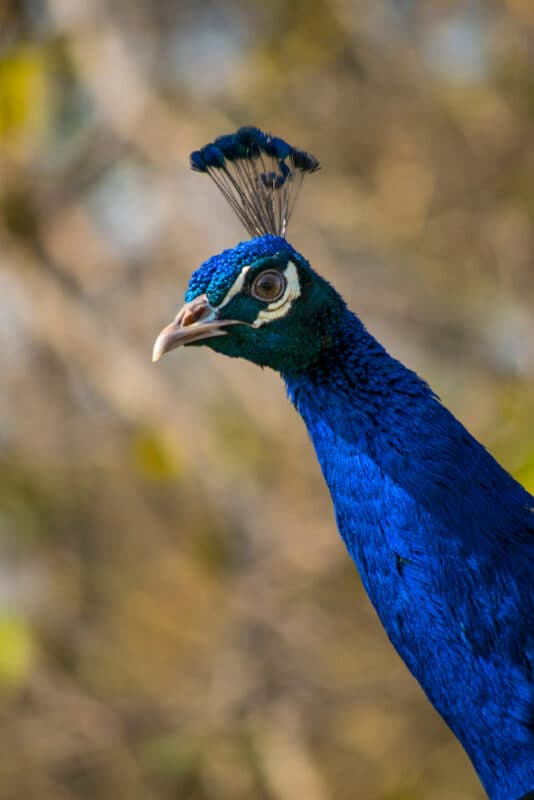
1. How to Do It
You can either buy peafowl eggs and hatch them yourself or you can buy adult peafowl. The choice is yours!
If you decide to hatch your own peafowl eggs, know that it takes longer than if you were going to hatch chicken eggs. Normally, the process will take up to 30 days. You need to keep the eggs at 99-100°F with eggs incubated as soon as they are laid.
You can hatch peafowl eggs in most commercial incubators. In some cases, you may be able to convince the ducks or chickens you already have to sit on the eggs and hatch them, too. Peahens will lay a clutch of around 4-12 eggs apiece, going broody about once or twice per year.
Peachicks mature quickly, as they hatch fully feathered. They can fly within a week! That said, you’ll still need to set up an adequate brooder space that is similar to what you’d provide for a group of chickens.
The one main difference between breeding peafowl and breeding birds of other species is in the timing of the breeding season. It usually starts in March and ends in August. It is not a year-round process as it is with other birds.
Also, since peahens don’t lay in their first year, it takes some time to get any peachicks.
2. Where to Buy Peafowl
You can buy peafowl from many online hatcheries. Usually, you’ll start in the spring or summer, particularly if you are raising them as chicks. They have a harder time surviving a harsh winter.
Peachicks can be purchased from breeders, hatcheries, farmers, and other places online. The chicks are expensive but tend to be good quality if you buy them from hatcheries or breeders. If you are looking for specific genetics, breeders might be the best place to look.
No matter where you buy your peafowl, just make sure you get a healthy bird. Ask your hatchery or breeder questions and make sure your bird has clean eyes, feathers, feet, and nostrils.
Learn as much as you can about raising peafowl before you dive in. Although these birds are bony means hard to raise, they do present some unique challenges – and it pays to be well-informed!
